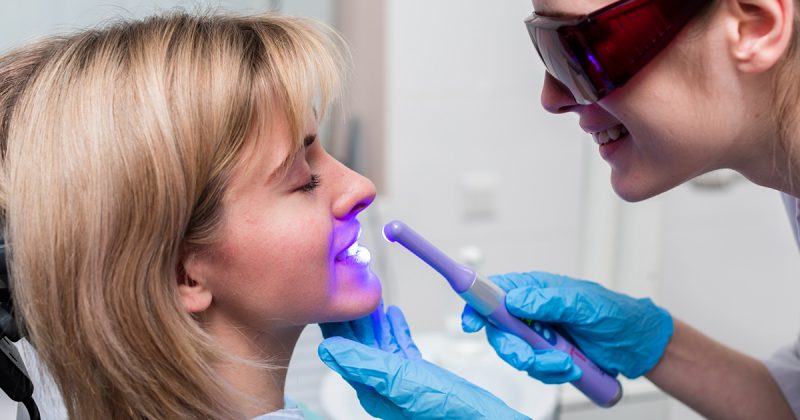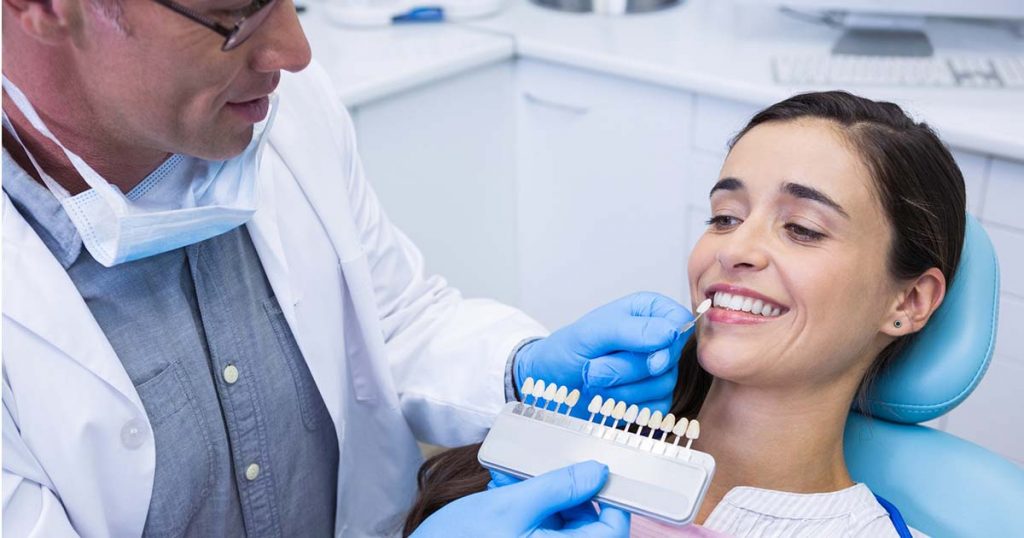How Operatory Lighting Affects Shade Perception and Tips to Avoid Mismatches

Ever had a patient return with, “Doctor, my crown doesn’t match my teeth“?
If so, you know firsthand how aggravating and costly a shade mismatch can be. One of the most underappreciated culprits in this dilemma?
Operatory Lighting
In Dentistry, shade matching isn’t merely about selecting the proper ceramic or composite; it’s also about knowing how light affects what you perceive. Incorrect lighting conditions can cause an ideal shade to appear something different when the patient leaves your clinic.
The Science Behind Shade Perception
Your eyes don’t simply view an object; they read light reflecting off that object. This light varies based on:
- Type of Light Source (LED, halogen, natural daylight)
- Color Temperature (warm vs cool light)
- CRI – Color Rendering Index (how well a light source brings out colors)
- Light Angle and Intensity
Even a flawlessly made crown will appear different under chair light compared to daylight because each is illuminated by a different light spectrum.
How Operatory Lighting May Deceive You
1. Color Temperature Differences
Daylight contains a color temperature of approximately 5500–6500 Kelvin, which is neutral white. Most dental operatories have lights with considerably warmer (yellowish) or cooler (bluish) colors.
This deviation can cause a nuance in shades, resulting in mismatches.
2. CRI (Color Rendering Index) Problems
An ideal CRI of 90 or higher is best for shade choice since it renders colors closer to true.
Lower CRI lights bend shades’ appearance away from reality particularly nuanced tooth colors.
3. Metamerism
This is where two hues match perfectly in one lighting but not another.
For instance, your selected shade may look awesome in your operatory light but quite different when the patient goes outside.
4. Shadowing and Glare
Incorrect positioning of light will cast shadows on the surface of the tooth, concealing fine color transitions. Commonly, Vita Classical Shade Guide is used.
Conversely, too much glare will cause lighter shades to be perceived as brighter than they really are.

Common Errors Dentists Make
- Using only chair light for shade matching.
- Failure to account for patient’s natural environment (workplace, outdoor exposure).
- Omitting shade verification in natural light.
- Omitting consideration for time of day, morning vs afternoon sun can modify perception.
- Failing to train assistants in fundamentals of lighting for shade work.
How to Prevent Shade Mismatches
1. Use Multiple Sources of Light
Observe shade under operatory light and daylight.
In the absence of natural light, use a color-corrected light source with 5500–6500K and CRI > 90.
2. Position the Light Properly
- Do not direct light onto the tooth when making shade selections.
- Tilt light 45 degrees to minimize glare and shadow.
3. Take Shade at Appointment Start
- Teeth dry out throughout treatment and become whiter.
- Shade selection needs to occur prior to rubber dam placement or tooth preparation.
4. Neutral Background
- Request the patient to remove vibrant lipstick or colored apparel close to the face.
- Utilize a neutral gray bib to reduce color distractions.
5. Employ Digital Shade Matching Devices
- Equipment such as Waldent Shade Pro Digital Shade Determination Device and intraoral scanners with shade detection eliminate human bias due to light conditions.

6. Document Under Consistent Conditions
- When sending images to the lab, lighting should be consistent in both clinical and laboratory environments.
- Always have a shade tab included in the picture for reference.
7. Lighting Upgrades That Help
- If your operatory continues to use old halogen lights or low-CRI LEDs, it may be time to upgrade.
- Take a look at dental operatory lights that are color-accurate; many now feature adjustable color temperature modes so you can toggle between treatment mode and shade-matching mode.
- Some models also let you switch between daylight mode (5500K) for shade selection and warmer light (4000K) for patient comfort during extended treatments.
The Patient Communication Angle
Shade mismatches from lighting issues don’t only create remakes, they can erode patient trust.
By informing patients that you verify their shade under various lighting conditions, you’re reminding them of your attention to precision and quality.
Sample chairside phrase:
“We’re going to check your crown shade under this light and by the window, so it matches perfectly both in the clinic and outside.”
This builds confidence and reduces the risk of disputes later.
Summary Table – Shade Matching and Operatory Lighting
| Factor | Ideal Standard | Common Issue in Clinics |
|---|---|---|
| Color Temperature | 5500–6500K (equivalent daylight) | Excessive warm/cool lighting |
| CRI | 90+ | Low CRI causing color distortion |
| Light Angle | 45° to tooth surface | Direct glare or deep shadows |
| Timing of Shade Match | Before treatment starts | After prep – teeth dehydrated |
| Verification | Multiple light sources | Only under chair light |
Final Thoughts
Lighting is one of the simplest yet most underrated variables in shade matching.
With a few tweaks and mindful steps, you can cut remakes by a significant margin, enhance lab communication, and satisfy patients.
Perfection of shade is not merely a matter of the material you employ—it’s a matter of seeing the true shade in the right light.
Operatory Lighting and Shade Matching FAQs
1. What color temperature is ideal for dental shade matching?
The range of 5500–6500 Kelvin (daylight equivalent) is ideal for precise shade perception.
2. Do LED lights create shade mismatches?
Yes, if they have a poor CRI or wrong color temperature. Utilize dental-specific LEDs with CRI greater than 90.
3. Should I always do shade in natural light?
Yes, whenever you can. If this is not possible, utilize daylight-simulating light sources.
4. Why do teeth appear whiter after drying?
Dehydration alters light reflection on enamel, making it lighter—that is why shade selection needs to be carried out before prepping.
5. Are digital shade matching devices worth it?
They are, as they reduce human error, particularly where lighting in the clinics is poor or when dealing with complicated cases.

No Comment